 The law that allows the California Council for Interior Design Certification (CCIDC) to certify interior designers is up for review this year in the State Legislature. This oversight review, called a Sunset Review, is a normal process for professions that are authorized and regulated by the state. The California Architects Board had its last sunset review in 2019, for example, and various boards are undergoing a sunset review this year, including the Board of Registered Nursing, Board of Occupational Therapy, Physical Therapy Board, and CCIDC, among others.
The law that allows the California Council for Interior Design Certification (CCIDC) to certify interior designers is up for review this year in the State Legislature. This oversight review, called a Sunset Review, is a normal process for professions that are authorized and regulated by the state. The California Architects Board had its last sunset review in 2019, for example, and various boards are undergoing a sunset review this year, including the Board of Registered Nursing, Board of Occupational Therapy, Physical Therapy Board, and CCIDC, among others.
While Certified Interior Designers (CID) are not directly regulated by the state like architects, engineers, nurses, and doctors, state law does authorize the nonprofit entity CCIDC to certify individuals who have demonstrated competency through education, experience, and examination.
AIA CA expressed its support for CCIDC at the Sunset Review Oversight Hearing held on March 10 by the State Senate Committee on Business, Professions, and Economic Development and the State Assembly Committee on Business and Professions.
The CID law was created by legislation in 1990, and was a compromise between AIA CA and interior design organizations that were seeking a Practice Act for interior designers. A Practice Act would have restricted practice to those licensed by the state. Instead, 1990 agreement kept the law that allows unlicensed individuals to design spaces that are exempt from the Architects Practice Act (nonstructural and nonseismic alterations that do not affect the safety of the building), and provided consumers of those services an ability to know if the unlicensed individual has demonstrated competence with an interior design certification provided by CCIDC.
CCIDC also is asking for a change in the law that would specifically allow CIDs to include elements in their documents that do affect the safety of the building, such as horizontal exiting and rated corridoors. Historically, AIA CA has opposed efforts to make these changes to state law. The change CCIDC is seeking can be found on pages 45 and 46 of their Sunset Review document submitted to the Legislature.
For your information, here is the background paper on the CCIDC Sunset Review prepared by legislative staff.
Please feel free to contact the AIA CA Director of Government Relations Mark Christian, Hon. AIA CA at mchristian@aiacalifornia.org if you have any questions or comments.

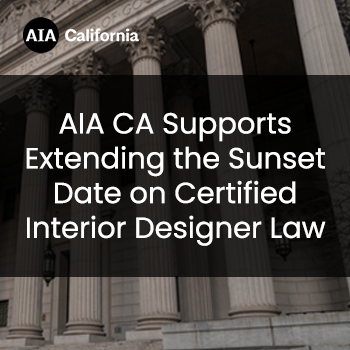
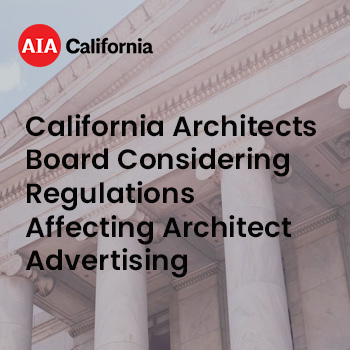
 There is time for architects to submit comments.
There is time for architects to submit comments.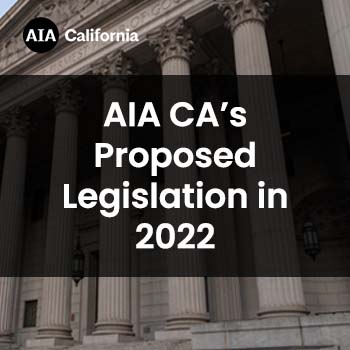
 At the direction of the AIA CA Board of Directors, we are seeking to have three bills introduced in the Legislature before the February 18 bill introduction deadline. The proposed bills are:
At the direction of the AIA CA Board of Directors, we are seeking to have three bills introduced in the Legislature before the February 18 bill introduction deadline. The proposed bills are:
 2022 brings some new laws that may be of interest to California Architects. Here are some of those new laws.
2022 brings some new laws that may be of interest to California Architects. Here are some of those new laws.
 Governor Newsom released his proposed State Budget on Monday. The budget proposes to spend more than $284 billion, and includes a surplus that is expected to be more than $20 billion. The State Budget that will be passed by the Legislature in June will be different than what the governor proposed, depending on how well tax receipts hold up this year and the funding desires of the Legislature, but the final State Budget should be close to what the governor proposed.
Governor Newsom released his proposed State Budget on Monday. The budget proposes to spend more than $284 billion, and includes a surplus that is expected to be more than $20 billion. The State Budget that will be passed by the Legislature in June will be different than what the governor proposed, depending on how well tax receipts hold up this year and the funding desires of the Legislature, but the final State Budget should be close to what the governor proposed.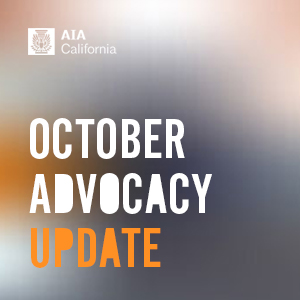

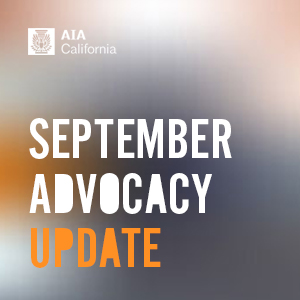
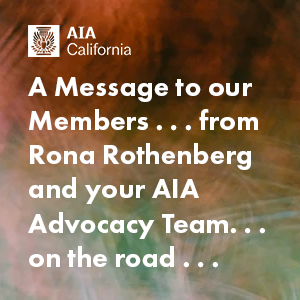

 The breakout sessions and policy dinners were especially thought-provoking and engaging. This included panels and lectures on school safety and design, NCARB and model laws, housing access and affordability, energy efficiency, resiliency in design and construction. In particular, Mark participated in a panel on legislation aimed at improving energy performance in buildings and Ric. moderated a discussion of a topic of keen interest to me about models for 21st Century Citizen Architects. The invited speakers were among the best and brightest including Mayor Mick Cornett of Oklahoma City, Joseph DaSilva from the Rhode Island Department of Education and Bonnie Nickerson from the City of Providence Planning, Dr. Neil Kleiman, and expert on “living cities” from NYC and finally the urban innovator and author Jayson White.
The breakout sessions and policy dinners were especially thought-provoking and engaging. This included panels and lectures on school safety and design, NCARB and model laws, housing access and affordability, energy efficiency, resiliency in design and construction. In particular, Mark participated in a panel on legislation aimed at improving energy performance in buildings and Ric. moderated a discussion of a topic of keen interest to me about models for 21st Century Citizen Architects. The invited speakers were among the best and brightest including Mayor Mick Cornett of Oklahoma City, Joseph DaSilva from the Rhode Island Department of Education and Bonnie Nickerson from the City of Providence Planning, Dr. Neil Kleiman, and expert on “living cities” from NYC and finally the urban innovator and author Jayson White.